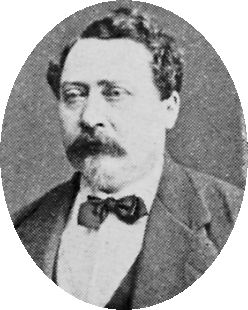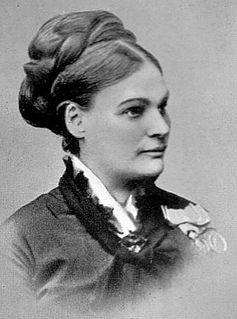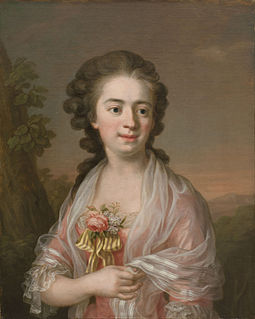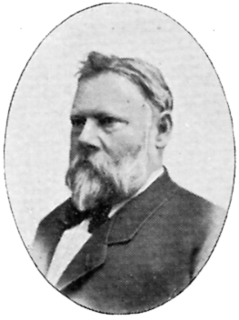 W
WJohan Fredrik Åbom was a Swedish architect.
 W
WLea Fredrika Ahlborn was a famous Swedish artist and medallist. She was a member of the Royal Swedish Academy of Arts and the first woman to be appointed royal printmaker. The position of royal printmaker was counted as a public office, and thereby made her the first female official or civil servant in Sweden.
 W
WAxel Johan Anderberg was a Swedish architect. He was active from the 1880s to the early 1930s.
 W
WNils Andresson (1817–1865), was a Swedish painter, who was born in East Gothland, in 1817, was the son of a peasant. After he had received a course of instruction in Stockholm, he travelled through Europe, and went in 1854 to Paris, where he stayed for two years, and studied under Couture. On his return to Stockholm, he was made a member of the Academy, and in 1858 a professor. He died at Vaxholm, near Stockholm, in 1865. He painted historical pieces, pictures of genre subjects, and landscapes with animals. Good examples of his work are in the National Museum at Stockholm.
 W
WÁsgrímur Jónsson was an Icelandic painter, and one of the first in the country to make art a professional living.
 W
WBernhard von Beskow was a Swedish dramatist and historian.
 W
WCarl Johan Billmark (1804–70) was a Swedish landscape painter.
 W
WOscar Gustaf Björck was a Swedish painter and a professor at the Royal Swedish Academy of Arts.
 W
WGustaf Ferdinand Boberg was a Swedish architect.
 W
WJohan Christoffer Boklund was a Swedish history, genre, and portrait painter from Kulla-Gunnarstorp in Scania. He was the son of a gardener. At the age of fifteen, Boklund came to Lund, where he worked on illustrations for Sven Nilsson's works on Scandinavian fauna. He then became a student at the Royal Danish Academy of Fine Arts in Copenhagen where J. L. Lund was his teacher.
 W
WAgnes Fredrika Börjesson, sometimes called Agneta, was a Swedish painter who specialized in genre and historical scenes.
 W
WMaria Charlotta Cedercreutz, married surname Wrangel (1736–1815), was a Swedish artist, lady-in-waiting and baroness. She was a member of the Royal Swedish Academy of Arts.
 W
WChristina Charlotta Cederström née Mörner af Morlanda was a Swedish dilettante artist, composer, salon hostess, and baroness.
 W
WFritz Ludvig von Dardel was a Swedish diarist, illustrator and early comics artist. He was a courtier, and is known for his diary and illustrations depicting the life of the Swedish court in the mid 19th century.
 W
WAxel Fredrik Claësson Wachtmeister af Johannishus was Swedish politician and diplomat who from 2 August 1905 until 7 November 1905 served as Minister of Foreign Affairs of Sweden.
 W
WMaria Johanna Görtz, also known as Jeanette Görtz, (1783–1853), was a Swedish artist, still life painter and drawing artist. She was a member of the Royal Swedish Academy of Arts.
 W
WAdélaïde Victoire Hall, called Adèle, was a Swedish-French artist and noble (marquise). She was given the honorary title of agré of the Royal Swedish Academy of Arts (1793).
 W
WPeter Adolf Hall, also known as PA Hall or Peter Adolphe Hall,, was a Swedish-French artist who mainly devoted himself to miniature painting.
 W
WHerman Teodor Holmgren was a Swedish architect.
 W
WWilhelmina Catharina Lagerholm (1826–1917) was a Swedish painter and an early professional female photographer. After first studying and practising painting, she turned mainly to photography in 1862, opening a studio in Örebro in central Sweden.
 W
WAmalia Euphrosyne Lindegren was a Swedish artist and painter. She was a member of the Royal Swedish Academy of Arts (1856).
 W
WJohan August Malmström was a Swedish painter. As an artist, he was known for his country motifs often featuring children. His most widely recognized work is Grindslanten (1885) featuring a typical scene from 19th century Sweden. Influenced by the national romanticism of Gothicismus, he also collected motives from Norse mythology. He made illustrations for publications of both Frithiofs saga and The Tales of Ensign Stål.
 W
WGustaf Wilhelm Palm was a Swedish landscape painter and art professor.
 W
WUlrika "Ulla" Fredrica Pasch, was a Swedish rococo painter and miniaturist, and a member of the Royal Swedish Academy of Arts.
 W
WBenjamin Patersen, or Patersson was a Swedish-born Russian painter and engraver known primarily for his cityscapes.
 W
WMaria Christina Röhl was a Swedish portrait artist. She made portraits of many of the best known people in Sweden in the first half of the 19th century. Her paintings are exhibited at the Nationalmuseum in Stockholm. The Swedish Royal library has a collection of 1800 portraits by her. She was a member of the Royal Swedish Academy of Arts (1843) and an official portrait artist of the royal court.
 W
WOlof Samuel Tempelman was a Swedish architect and, from 1779, professor at the Royal Swedish Academy of Arts. He was appointed royal architect in 1799.
 W
WKnut Agathon Wallenberg was a Swedish banker and politician, he was also a Knight of the Order of the Seraphim. Wallenberg was Minister for Foreign Affairs 1914–1917, and member of the Riksdag's Första kammaren 1907–1919. Together with his wife, he created Knut and Alice Wallenberg Foundation, which is one of the main contributors to the private university Stockholm School of Economics. Wallenberg was one of the founders of the Stockholm School of Economics, and is also seen as the founder of the community of Saltsjöbaden and an associated railroad.
 W
WMårten Eskil Winge was a Swedish artist. He was a professor at the Royal Swedish Academy of Arts. He was associated with the Düsseldorf school of painting. His art was influenced by the Norse mythology themes also found in works by Nils Blommér (1816–1853) and Carl Wahlbom (1810-1858).